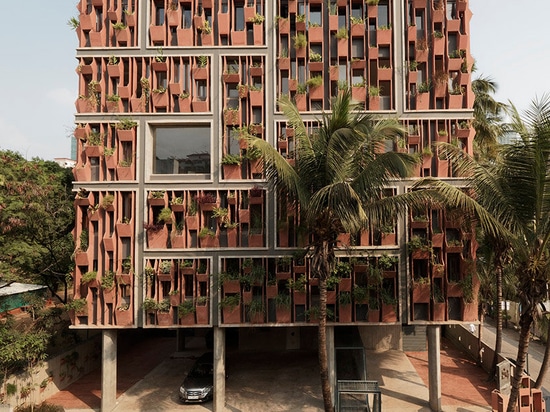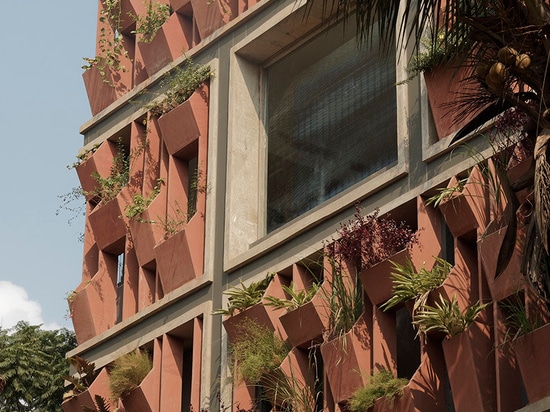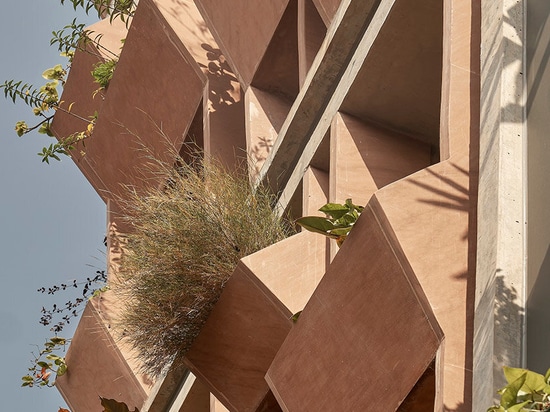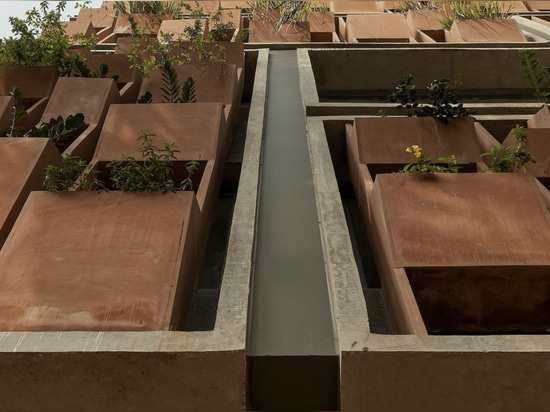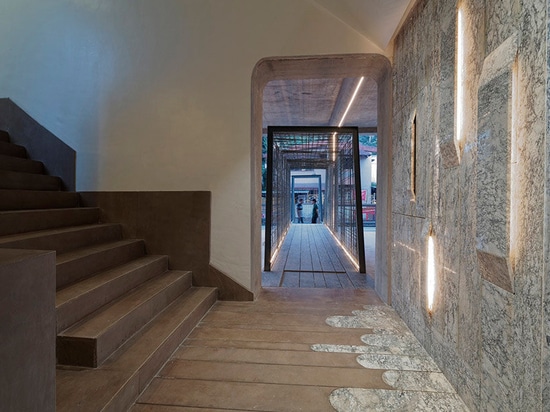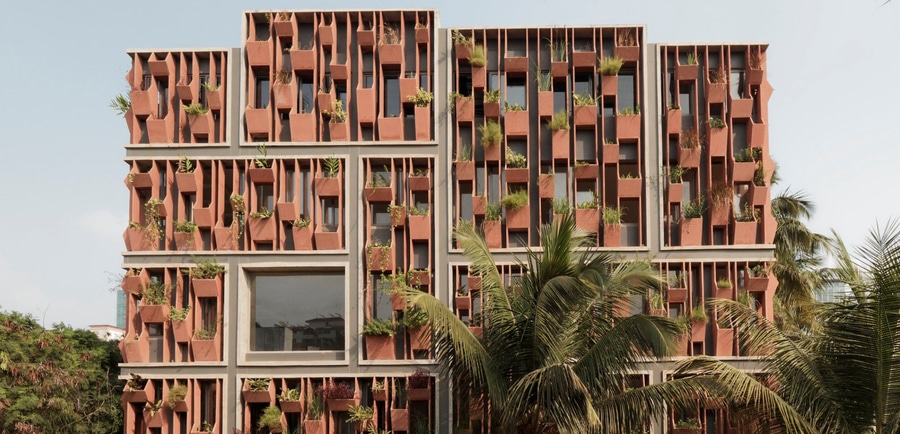
#COMMERCIAL ARCHITECTURE PROJECTS
Shared workspaces in india are wrapped in a living facade of stone planters
S NINE: LIVING ARCHITECTURE OUTSIDE PUNE, INDIA
In the outskirts of Pune, India, stands S NINE, a co-working space designed by architecture studio PMA Madhushala. Unlike the conventional glass-box structures that dominate the commercial landscape, the building is wrapped in a facade of integrated red sandstone planters. The team took inspiration from the ethos of the region, striving to create a timeless design rooted in the physical and cultural context of Talegaon Dabhade. The project thus stands as an active organism, capable of breathing and transforming alongside the changing seasons and the needs of its occupants.
THE NOSTALGIA OF NATURE INTEGRATION
One of the key design considerations for PMA Madhushala was the incorporation of nature within the S NINE workspace. In Pune’s earlier architectural heritage, buildings featured planters protruding onto the streets, creating a celebration of life and a strong connection with nature in transitional spaces such as balconies and windows. The architects embraced this nostalgic element by introducing planters by the windows, allowing occupants to touch, feel, and nurture the plants from inside the workspace.
This design feature not only brings life and greenery into the internal environment but also fosters a sense of belonging for the users. The planters also enliven the surrounding neighborhood, creating a lively and natural aesthetic. Additionally, the semi-permeable natural skin of the building serves a dual purpose, functioning as both planters and a shading device.
ENVIRONMENTALLY CONSCIOUS ENVELOPE BY PMA MADHUSHALA
The architects responded to the global trend of air-tight, fully glazed buildings, which often fail to meet the comfort requirements and expectations of occupants, particularly in hot semi-arid climates like India. S NINE presents an alternative envelope solution that is efficient and environmentally conscious. The building envelope features 25-millimeter thick slabs of natural red sandstone assembled to create a grid of planters and fenestrations.
By integrating plant-life into the building’s skin, the architecture establishes a distinct connection with nature. The vertical space of the outer envelope is divided into smaller concrete modules, allowing for easier construction. The locally crafted stone fins with planters are organically arranged on each module, creating an illusion of scale and adding visual interest to the elevation.
The asymmetrical organization of planters creates a pattern that is visually engaging even without the presence of plants. However, the organic arrangement of red sandstone and foliage colors further enhances the composition, creating a soothing experience for viewers. The outer envelope of the building acts as a living skin that naturally evolves over time. The stone fenestrations can be changed, allowing for modifications to the building’s architectural expression. By maintaining the independence of the stone fins from the main structure, S NINE retains the freedom to adapt and transform its overall appearance.
